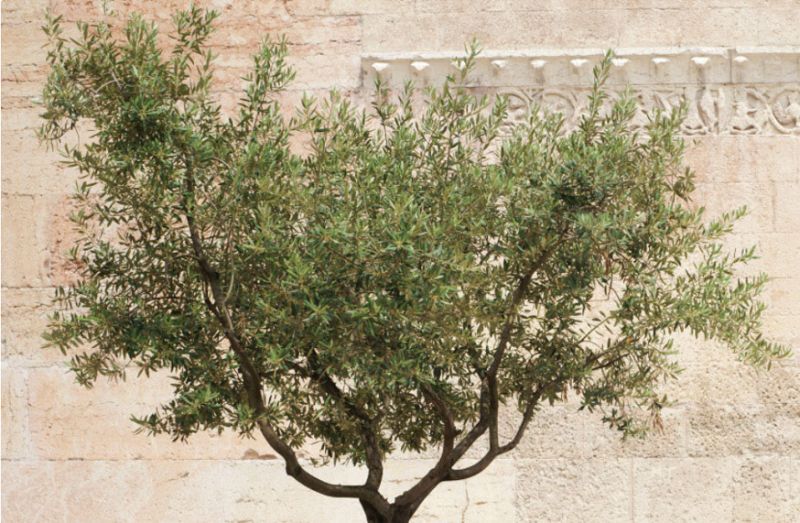Tasty stone fruits, silver-green foliage, and unique trunks earn olive trees a place in the garden

Olive trees (Olea europaea) emit a rare and exotic aura: maybe it’s their age-old association with peace—or with azure-watered places. But often, folks don’t realize these evergreens can be grown at home.
The Lowcountry climate, warm with winter chills, will encourage self-fertile varieties such as ‘Frantoio’ and ‘Arbequina’ to produce a drupe, aka an olive, perfectly worthy of a place on your table. When planted in the landscape, the trees’ gorgeous silver-green foliage can reach 15 to 40 feet tall upon a uniquely gnarled trunk.
Smaller spaces can benefit from the easy elegance of a dwarf, non-fruiting variety called ‘Little Ollie’. Reaching four to six feet, it can be trained as a potted topiary or pruned to create a small hedge.
The growing requirements for all three are the same: full sun and well-draining soil with pH between 7.5 and 9. Once established, the trees are drought- and salt-tolerant. Note that if temperatures drop below 15 degrees in the winter (or below 26 degrees when the tree is set with fruit), you need to move the plant into a sheltered location, if possible.
Feed your olive in the spring and mid-summer with a complete fertilizer that includes micronutrients and 10 percent nitrogen. Follow package directions carefully, as too much fertilizer will cause the tree to produce foliage and not drupes.
To make table olives, harvest the fruit when it’s green in late summer or early fall and cure it in a brine solution to remove bitterness. And remember that when it comes to enjoying inner peace, at least, sipping a martini in view of its patron olive tree is highly recommended.
Photograph courtesy of (‘Arbequina’) Monrovia